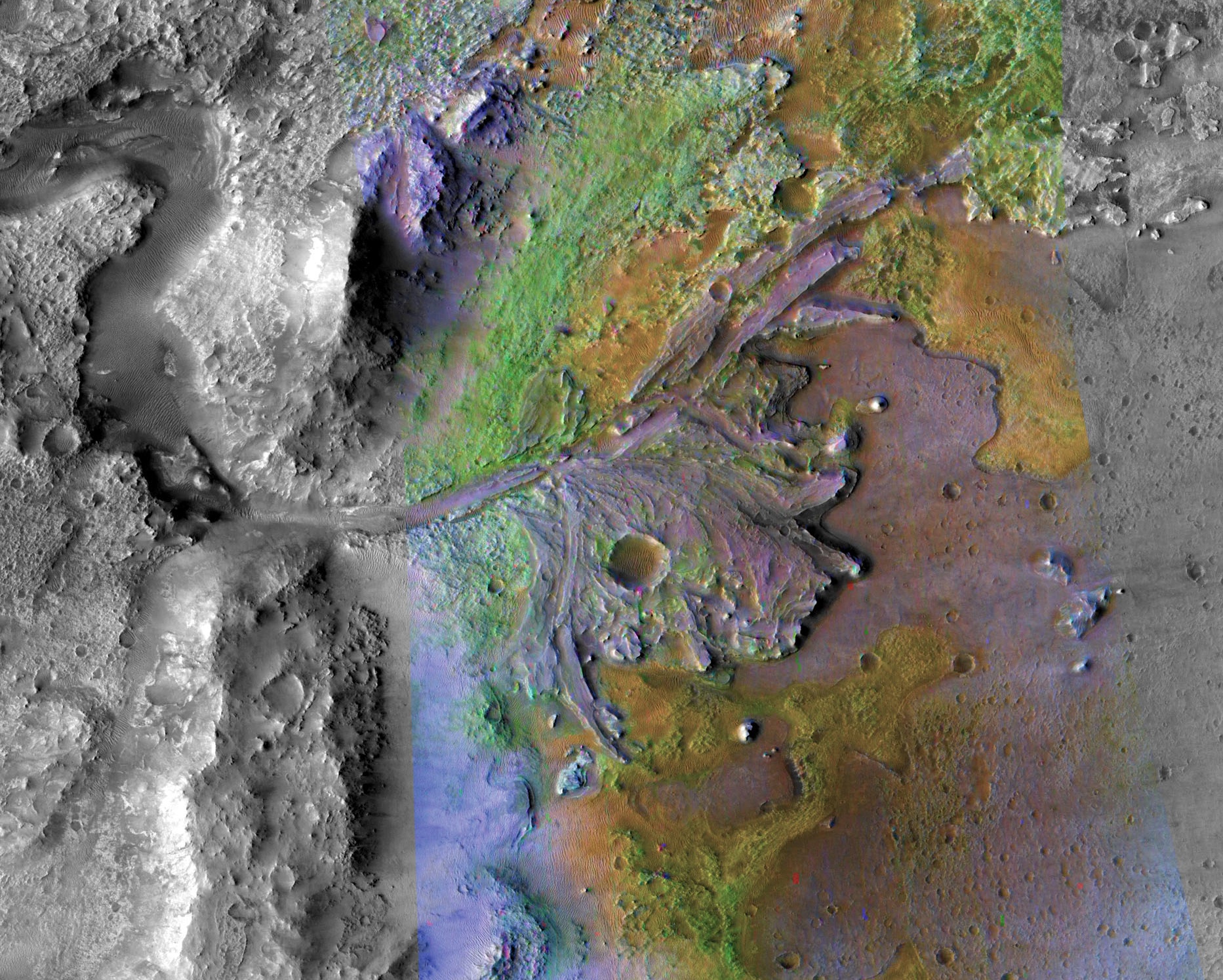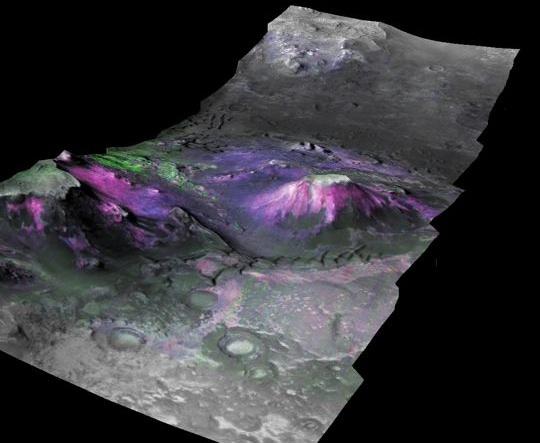PROVIDENCE, R.I. [Brown University] — For decades, scientists have theorized – romanticized, even – that Mars has harbored water. The evidence has grown stronger as recent missions to the Red Planet have revealed in stunning detail Martian topography, mineralogy and clues to past climate. But how much water, where it was or is located and what it was doing have been hard to pin down.
“We’ve seen all this evidence of water on Mars,” said John Mustard, a Brown professor of planetary geology, “but did it do any work?”
Now, papers by Mustard and Brown graduate student Bethany Ehlmann provide some key insights into these questions.
Reporting for the first time results obtained from an instrument aboard the Mars Reconnaissance Orbiter (MRO), Mustard and colleagues have found that vast regions of the ancient southern highlands of Mars hosted a water-rich environment. In a paper that appears in the July 17 issue of Nature, Mustard’s team found evidence that water played a sizable role in changing the minerals of a variety of terrains in the Noachian period – about 4.6 billion to 3.8 billion years ago.
To support the claim, Mustard’s team relied on data supplied by the Compact Reconnaissance Imaging Spectrometer for Mars (CRISM), the instrument for which he is the deputy principal investigator. The researchers investigated the pervasive presence of phyllosilicates, clay-like minerals that preserve a record of water’s interaction with rocks.
Mustard homed in on intriguing phyllosilicate deposits in localized spots such as craters, valleys and dunes all over the planet. Among the highlights, he detected the clay-like minerals in fans and deltas within three regions, most notably the Jezero crater. That discovery marks the first time hydrated silicates have been found in sediments “clearly lain by water,” Mustard wrote as lead author of the paper, in which scientists from 13 other institutions participated.
The team also found phyllosilicate deposits in thousands of places in and around craters, including the pointed peaks located at the center of some of the depressions. The latter example suggests that water was present 4-5 kilometers below the ancient Martian surface, the team wrote, due to the generally accepted principle that crater-causing collisions excavate underground minerals that are then exposed on the crater peaks.
“Water must have been creating minerals at depth to get the signatures we see,” Mustard said.
The clay minerals were formed at low temperatures (100-200°C) – an important clue to understanding the Red Planet’s potential for habitability during the Noachian period.
“What does this mean for habitability? It’s very strong,” Mustard said. “It wasn’t this hot, boiling cauldron. It was a benign, water-rich environment for a long period of time.”
In a companion paper published June 2 in Nature Geoscience, Ehlmann and colleagues from Brown and other institutions analyzed sediment deposits in two exquisitely preserved deltas in the Jezero crater, which held an ancient lake slightly larger than Lake Tahoe. The deltas suggest a flow from rivers carrying the clay-like minerals from an approximate 15,000-square kilometer watershed during the Noachian period.

Ehlmann said scientists cannot determine whether the river flow was sporadic or sustained, but they do know it was intense and involved a lot of water.
“So not only was water active in this region to weather the rocks, but there was enough of it to run through the beds, transport the clays and run into the lake and form the delta,” said Ehlmann, who has a National Science Foundation Graduate Research Fellowship.
The deltas appear to be excellent candidates for finding stored organic matter, Ehlmann said, because the clays brought in from the watershed and deposited in the lake would have trapped any organisms, leaving in essence a cemetery of microbes.
“If any microorganisms existed on ancient Mars, the watershed would have been a great place to live,” Ehlmann said.
NASA’s MRO program funded the research for Mustard’s paper. The National Science Foundation funded Ehlmann’s work.

